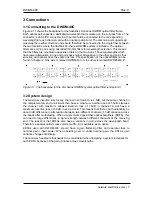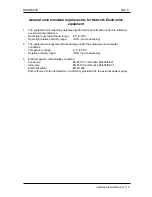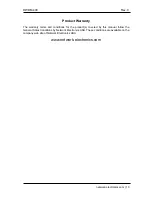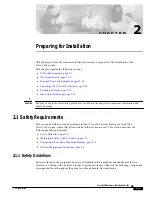
DWDM-40C
Rev.
0
4 Operation
4.1 Handling of optical fibers
This product includes fiber optic equipment. Access to the optical signal path is given through
the optical connectors (see separate chapter).
Even though a fiber optic cable can look almost the same as an electrical wire, special care
must be taken. Inside the cable is a fiber made of glass. Glass has very different physical
properties than the copper used in electrical wires.
In practical terms this means that these precautions must be taken:
•
Do not bend the fiber too much
•
Do not put anything on top of the optical fiber.
•
Keep the connectors clean from dust
If a fiber is bent to much, parts of the transmitted light is lost or in worst case the glass is
broken. All the datasheets of optical fibers have a point called "minimum bend radius". This
means that any bending of the fiber corresponding to a bend radius less than the given value
will make the light leak out of the fiber. A typical value is 20 mm to 40 mm (Telcordia
standard) for single mode fibers.
You should also avoid putting any heavy items on top of the optical fibers, because this will
change the optical properties of the fiber, and contribute to errors in the transmitted signal.
Unless the fiber is damaged, it will regain its optical properties after a bend is straightened
out or the items are removed / the squeeze is released.
4.2 Laser safety precautions
Guidelines to limit hazards from laser exposure.
All the available EO units in the flashlink
®
range include a laser.
Therefore this note on laser safety should be read thoroughly.
The lasers emit light at wavelengths around 1550 nm. This means that the human eye
cannot see the beam, and the blink reflex cannot protect the eye. (The human eye can see
light between 400 nm to 700 nm).
network-electronics.com
|
8































